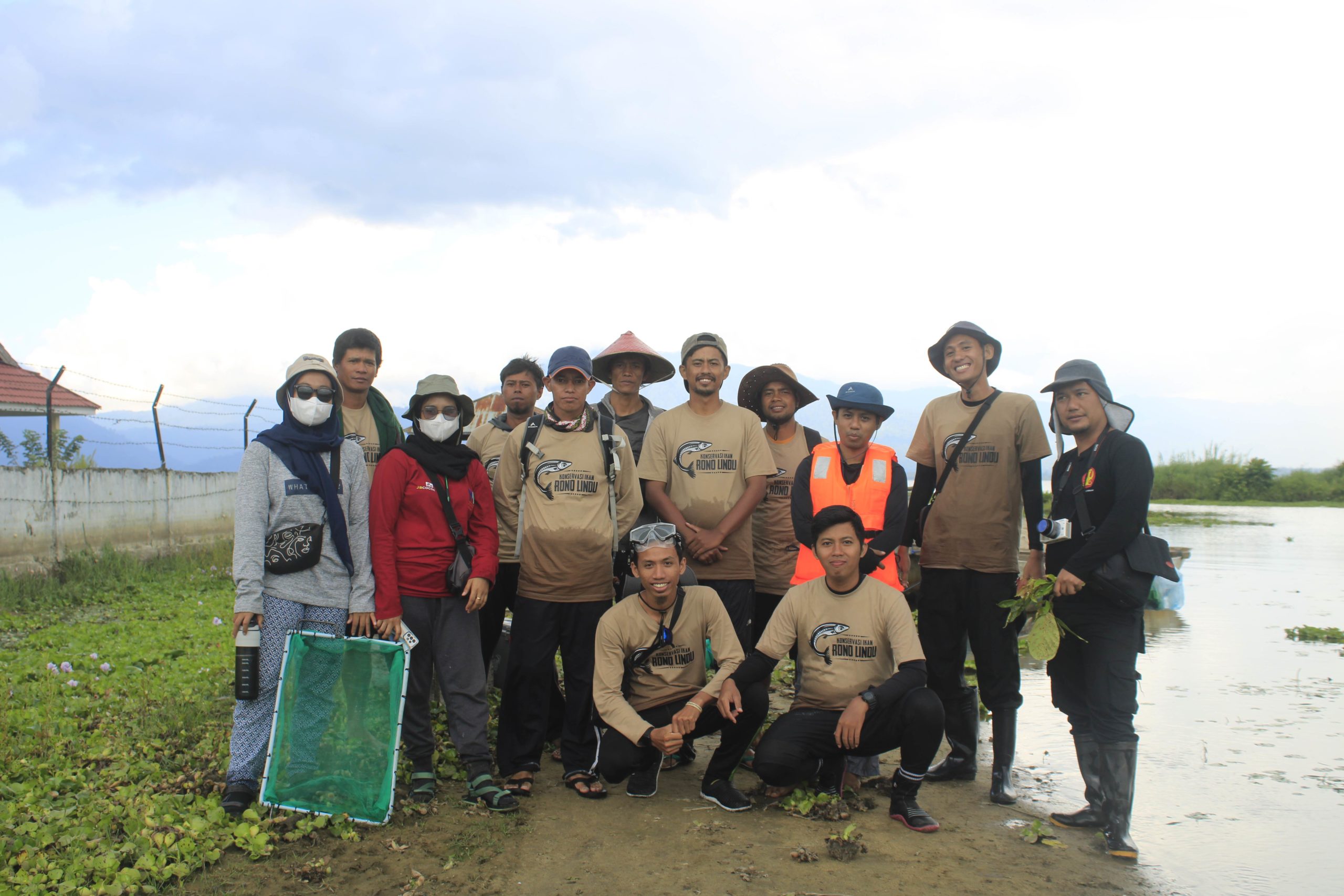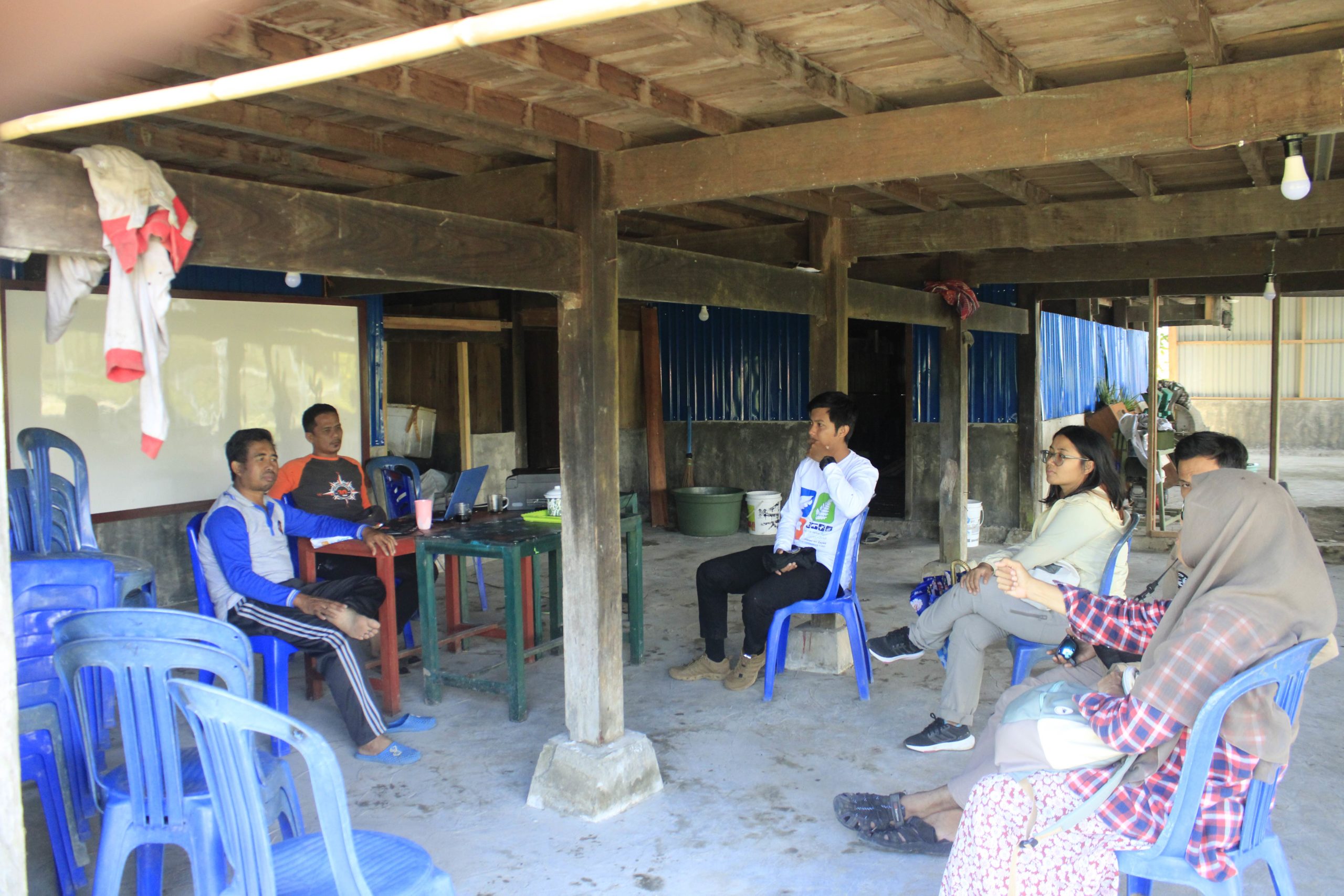When Muh. Herjayanto from Celebica applied for an ASAP Species Conservation Grant to find out more about the distribution of the fish Xenopoecilus sarasinorum and engage local communities in its conservation, he knew that he’d have to call in expertise in community engagement from other parties.
Xenopoecilus sarasinorum is listed as Critically Endangered by the IUCN Red List of Threatened Species. The fish has only ever been found in Lake Lindu in Central Sulawesi, Indonesia, to the north-west of the larger Lake Poso. Celebica wanted to find out more about the species to understand the size of its population and what action should be taken to support its survival. Celebica knew they needed to work closely with local communities, fishermen and government to address some of the main threats to the species.

Celebica began by drawing up a list of people and organisations that they wanted to work with. As a local NGO, they already knew the location and terrain of Lake Lindu, so they chose each stakeholder carefully based on what they could bring to the project.
One of their partnerships was with Sulawesi-based PROGRES. They met with PROGRES initially via Zoom and then for an on-site inspection at Lake Lindu to survey the population of Xenopoecilus sarasinorum.
“Working together brought numerous advantages and fresh insights,” said Muh. Herjayanto from Celebica. “We exchanged valuable information regarding the organisation’s endeavours in conservation and management.”
Collaborations like this one play an important role in addressing the complexities faced by conservation today. Organisations across the ASAP partnership that are addressing some of the most urgent conservation challenges of our time can often benefit from collective action. Here, we delve into some of the ways that networking and collaboration can amplify impact and bring wider benefits for the conservation of species.
Exchanging knowledge
Every ASAP Species is unique, with a different set of behaviours, habitats and conservation challenges. Different people and organisations bring their own knowledge, resources and strategies from their individual experiences. By forming a collaboration and working in partnership, they can exchange vital knowledge and insights and learn from each other to accelerate effective conservation measures. This was the case with Celebica who involved PROGRES in their project because of their experience of working with local communities.
Pooling resources
Successfully conserving ASAP Species can often require substantial resources that go beyond a single organisation. This can include funding, staffing, materials and technology. When organisations work together, they can pool their resources and make the overall conservation project much stronger and more impactful. For example, when Celebica involved the Department for Biology and Department Fisheries at Tadulako University in their project, they gained access to the university laboratory where they could analyse the results from their field survey.

Combining skills
Tackling the decline of species in Southeast Asia cannot be achieved in isolation from other social, environmental and economic challenges. Networking can give organisations the opportunity to form multidisciplinary partnerships that bring a wide range of skills together to develop a comprehensive and strategic project. Celebica recognised that engaging with the government Fisheries Service could help to prevent new invasive species from being introduced to Lake Lindu.
Engaging local communities
Engaging with local communities requires a particular set of skills. If an organisation leading a conservation project does not have a strong presence in the local community near the habitat for the species, partnering with a group that does can make the project far more likely to succeed. When Celebica brought PROGRES into their project, it meant that they could access advice on how to work with communities.

Widening impact
While many ASAP species are isolated to small pockets or regions, some can be found in habitats spanning multiple countries, for example with migratory birds like the Spoon-billed Sandpiper Calidris pygmaea. Working in partnership can enable organisations to collaborate across borders. This is also the case for tackling issues such as illegal wildlife trade, where multi-country collaboration is essential.
Sharing connections
Each organisation has their own set of connections. For some, this could be a good working relationship with local or national government, for others this could be a large supporter base or links to key influential people. Working collaboratively can enable a project to benefit from those connections, delivering stronger and more impactful conservation outcomes.
“Ensuring a better life for ourselves and future generations is at the core of conservation efforts. We aim to maintain natural stability and balance,” said Muh. Herjayanto.
In recognition of the importance of collaboration, ASAP has launched the ASAP Partner Networking Grant. The grant is available for ASAP Partners to work together in a way that strengthens ASAP species conservation. The grant can be used for activities such as exchanges, workshops, site visits and training sessions to learn from each other.
To discuss your ideas or find out more about the opportunity, contact the team today on conservationgrants@asapspecies.org.

